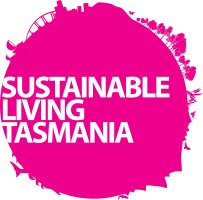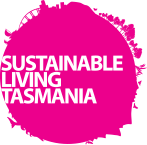News Categories
- 22 July 2024
Rail is the greenest form of transport. But an estimated 29 per cent of Britain’s current fleet is solely run on diesel fuel, further contributing to climate change. Battery bi-mode trains can replace ageing diesel fleets for train operators. We have reviewed routes across the country and identified strategic points along these routes where discontinuous...
- 22 July 2024
Sharing knowledge and learnings from agrisolar practices from around Australia and the world, this guide will assist proponents of utility-scale solar, and the landholders and farmers who work with them, to integrate agricultural activities into solar farm projects. Click here for more information.
- 22 July 2024
Agrivoltaics (agrophotovoltaics, agrisolar, or dual-use solar) is the dual use of land for solar energy production and agriculture.[2][3] The technique was conceived by Adolf Goetzberger and Armin Zastrow in 1981.[4] Agrivoltaics includes multiple methods of combining agriculture with photovoltaics, according to the agricultural activity, including plants, livestock, greenhouses, and pollinator support.[5] Because the sunlight is...
- 22 July 2024
In order to get the most out of its energy, a Portuguese company’s sustainable solution stalks the Sun as it journeys across the sky. SolarisFloat has created an innovative floating solar system that is unlike the many others that are currently stationed in bodies of water across the world. The floating island is powered by electric...
- 22 July 2024
AEMO’s Integrated System Plan (ISP) is a roadmap for the transition of the National Electricity Market (NEM) power system, with a clear plan for essential infrastructure that will meet future energy needs. The ISP’s optimal development path (ODP) sets out the needed generation, storage and network investments to transition to net zero by 2050 through...
- 22 July 2024
Billions of dollars are flowing to projects that fuel Australia’s ambitions to become a global renewable energy superpower. But what does leadership look like at the crossroads of renewable energy and the built environment? To understand the opportunities for Australia’s property and energy sectors, the Property Council of Australia and Procore are partnering on a...
- 18 June 2024
Fortescue has today officially opened its world-leading electrolyser manufacturing facility in Gladstone, Queensland, Australia – one of the first globally to house an automated assembly line. The 15,000sqm advanced manufacturing facility, constructed and fully commissioned in just over 2 years, will have capacity to produce over 2GW of Proton Exchange Membrane (PEM) electrolyser stacks annually....
- 18 June 2024
If you visit southern Greece or Tunisia, you might notice lots of white rooftops and white buildings to reflect the intense heat and keep residents cooler. It’s very different in Australia. New housing estates in the hottest areas around Sydney and Melbourne are dominated by dark rooftops, black roads and minimal tree cover. Dark colours...
- 18 June 2024
By maximising available solar power for water production, scientists produced drinking water cheaper than ever before in lower-income countries. Scientists have developed a new solar-powered system to convert saltwater into fresh drinking water which they say could help reduce dangerous waterborne diseases like cholera. In a paper published today in Nature Water, researchers show that...
- 18 June 2024
Most Australian homes are too hot in the summer, too cold in the winter, and expensive to run. Simple measures like better insulation, draught reduction, window shades, and solar panels, could reduce emissions, make these homes healthier to live in and drastically reduce the cost of energy bills. But people on low incomes and renters...
Engineers use quantum computing to develop transparent window coating that blocks heat, saves energy
18 June 2024Cooling accounts for about 15 percent of global energy consumption. Conventional clear windows allow the sun to heat up interior spaces, which energy-guzzling air-conditioners must then cool down. But what if a window could help cool the room, use no energy and preserve the view? Tengfei Luo, Dorini Family Professor of Energy Studies at the...
- 18 June 2024
An ISF report maps out Australia’s clean energy opportunities to push the country forward as a global energy superpower. Click here to download the report
- 18 June 2024
Click here to see the full library or reports and submissions
- 18 June 2024
Click here to read the full submission
- 18 June 2024
Click here to read the full report
- 18 June 2024
Lick here to read this report about the Australian Centre of Advanced Photovoltaics reporting that large waste facilities in major cities as photovoltaic waste is predicted to reach 100,000 tonnes annually by 2030. A new report on solar panel recycling has recommended a raft of measures including the establishment of large waste facilities in five...
- 18 June 2024
Read about this low cost, zero emission industrial heat and power innovation. Click here for more details.
- 18 June 2024
Australia’s energy transition is a significant economic opportunity for our industries, workers and regions. The transition to net zero will drive economic growth and job creation as we invest in new technologies and industries to achieve our net zero goals. Through this transition, it is important that the workers, communities and industries that have powered...
- 2 April 2024
2023-24 GenCost consultation draft released The drafting considers inputs sourced on real-time engineering and construction cost data points in Australia, as well as overseas parallels, information from equipment manufacturers, software and literature. Key points in the current draft are: Annual change in capital costs: Across the board, new build costs have generally stabilised as the...
- 2 April 2024
Data centres generate lots of unwanted heat while leisure centres struggle to warm up their pools. A solution has arrived Now here’s a novel solution for cash-strapped councils: use data centres to heat public swimming pools. It’s an idea that’s gaining traction in the UK thanks to the tech firm, Deep Green. It captures excess...
- 2 April 2024
Climate change is expected to intensify the effects of extreme weather events on power systems and increase the frequency of severe power outages. The large-scale integration of environment-dependent renewables during energy decarbonization could induce increased uncertainty in the supply–demand balance and climate vulnerability of power grids. This Perspective discusses the superimposed risks of climate change,...
- 2 April 2024
The global oil and gas industry encompasses a large and diverse range of players: from small, specialised operators to huge national oil companies. These producers face pivotal choices about their role in the global energy system amid a worsening climate crisis fuelled in large part by their core products. The Oil and Gas Industry in...
- 4 March 2024
As the world seeks cleaner energy solutions, the aqueous zinc battery technology breakthrough developed at UNSW Sydney promises a sustainable and resilient energy future. Click here for more information.
- 19 February 2024
Hydrogen can help Australia hit net-zero carbon emissions and become a green energy superpower – but only if it gets targeted government support. Click here to read the article from the Grattan Institute and to view their report.
- 8 February 2024
The World Hydro Congress has released The Bali Statement on Powering Sustainable Growth calls forsustainable hydropower to be the backbone of national strategies to build thriving, low-carbon economies bolstered by clean, renewable energy. Click here to read more.
- 8 February 2024
The Ecologists reports that nuclear power went backwards last year and shrunk to below 10 percent of global electricity generation despite all the hype about a new nuclear ‘renaissance’. Click here to read more.
- 8 February 2024
Farmers for Climate Action release polling showing farmers support for renewables in the regions. Click here to read more.
- 1 February 2024
NSW councils can require new developments be all-electric and gas-free by changing their Development Control Plans (DCPs). Fr more information click here
- 31 January 2024
Global renewable energy capacity grew by the fastest pace recorded in the last 20 years in 2023, which could put the world within reach of meeting a key climate target by the end of the decade, according to the International Energy Agency (IEA). Click here to read more of this good news.


